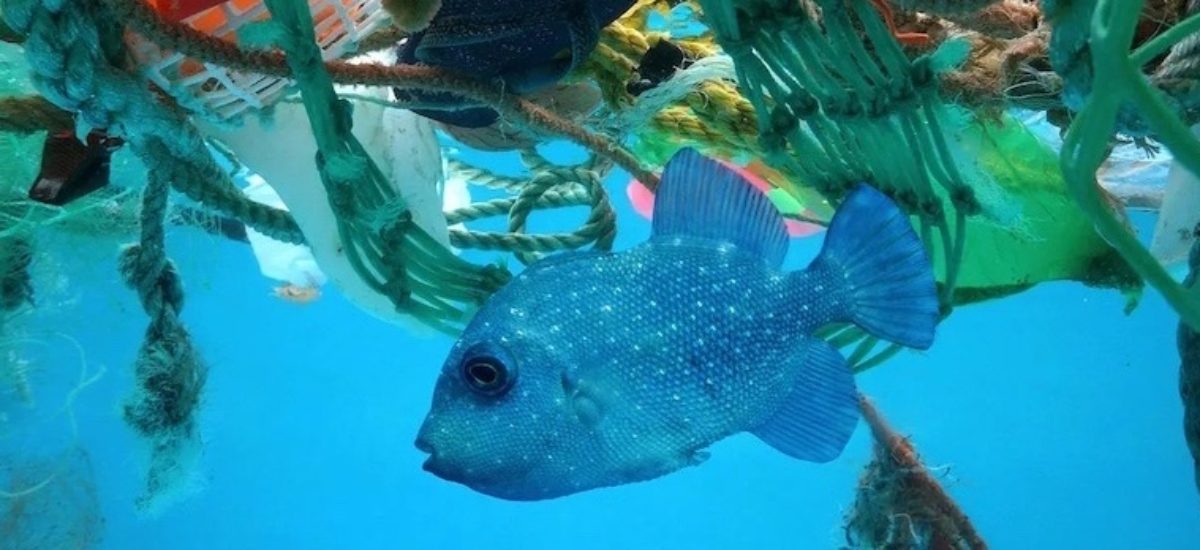Photo courtesy of the The Sri Lankan Scientist
Today is World Oceans Day
The oceans around Sri Lanka are a vital resource for food security, trade and shipping, coastal livelihoods, tourism, coastal protection and national security. Its coastal and marine resources and biological diversity, as well as the coastal and marine environment, provide a range of critical ecosystem services that benefit the people, sustaining livelihoods, as well as playing a vital role in economic development and strengthening protection from natural disasters, according to the Environment Ministry’s National Environment Action Plan (NEAP).
Sri Lanka’s coastal zone is under threat from increasing population pressure and unmanaged human activities that cause coastal water pollution because of sewage and solid waste; industrial effluents; pollution by tourists; the sectors of power, fisheries and aquaculture; oil spills; heavy metals and plastics. In addition, there is coastal erosion, sedimentation and siltation because sand and coral mining, coastal structures, upland irrigation schemes, deforestation and dams; habitat destruction, resource depletion and loss of biodiversity because of over harvesting, selective harvesting and use of harmful harvesting techniques. These threats are exacerbated by global warming leading to climate change and sea level rise, impacting on coastal ecosystem health, livelihoods (fisheries, aquaculture, and tourism) and the increased frequency and severity of natural hazards such as storm surges and storm waves, the plan said.
The coastal zone is governed by the Coast Conservation Act No 57 of 1981. The coastal region that influences the coastal marine environment comprises the coastal boundaries and extends about 50 km inland from the coast, which is approximately 23% of the total land area of the country accommodating over 33% of the population.
Coastal and marine fisheries, tourism, industry and maritime transport (ports and shipping) are some major economic activities associated with the coastal and marine environment. Among all economic activities, fisheries and tourism are the most dependent on the natural resources of the coast. Together, these two sectors generate 10% of Sri Lanka’s foreign exchange earnings and account for 6.7% of employment.
The coastal region is also the hub of industrial production in the country and houses approximately 62% of all industrial units mostly in the districts of Colombo, Gampaha, Kalutara, Galle, Matara and Puttalam. There are five major seaports located in Colombo, Galle, Trincomalee, Kankasanthurai and Hambantota. Close to 4,000 vessels berthed at these ports in 2019 and sea traffic is increasing continuously, the plan said.
The NEAP has listed nine strategies are to be adopted to protect and conserve marine resources:
- Conserve, manage and sustainably use coastal and marine ecosystems
- Conserve marine mammals and other threatened species
- Conserve, sustainably develop and manage coastal and marine resources
- Administer and manage affected areas along the coast
- Control coastal and marine pollution
- Control sand mining and manage extraction of other mineral resources to enhance beach stability, habitat and biodiversity conservation
- Adapt to climate change and natural hazard impacts on coastal features, infrastructure, coastal communities and livelihoods
- Carry out research and development to support the conservation and sustainable use of coastal and marine resources
- Strengthen policy, legal and institutional framework for coastal and marine resource conservation and sustainable use
Groundviews asked marine naturalist Dr. Malik Fernando about the problems facing Sri Lanka’s marine resources and how to deal with them.
What are the biggest current threats to country’s maritime resources?
The biggest threats to beaches and the coastal zone – the strip of land from sea level up to the start of typical terrestrial vegetation:
- Non-enforcement of existing building restrictions.
- Ill conceived, ill planned so-called “development” activities. A recent example was the attempt to widen the beach at Mount Lavinia by reclaiming with dredged sand. All the sand went back into the sea after destroying the seaweeds, oysters and other molluscs that had been inhabiting the rocks for years. A few years ago at Unawatuna there was an attempt to increase the beach area in front of one hotel that backfired by affecting many other hotels adversely and prompting the authorities to remove the barrier they had placed.
The biggest threats to commercially important marine animals and plants – importance could be direct or indirect:
- Directly important food animals like fish and crustaceans (crabs, lobsters, prawns) are harmed by overfishing. There are no quotas based on sustainable breeding populations. Destructive fishing methods such as blast fishing, bottom trawling that destroys the habitat, scuba diving spearfishing that targets large, breeding fish and use of illegal fishing gear that is non-selective or destroys the habitat.
- Indirect threats include destruction of mangroves and associated estuarine habitats that are nursery habitats used for breeding by certain species of fish and crustaceans; destruction of seagrass beds, habitat of dugongs – both these habitats are important for carbon sequestration and therefore in controlling global warming; polluting surface run off from adjacent coastlines and even from distant inland sites brought down in river flows; and development activities that impact off shore habitats such as harbours, groynes, piers and land reclamation.
What action should be taken to preserve our maritime resources and how can the public help?
Our maritime resources can be preserved by enforcing the laws that prevail. The public can help by observing those laws. The public can also help by not using the ocean and the waterways that drain into the sea as garbage bins. In a small way, beach users can help by taking their litter back and disposing them in garbage bins rather than dropping stuff on the beach.
Are there enough laws and regulations to safeguard the oceans?
By and large yes, there are plenty of laws, although some need improvement. In my view, one area that needs improvement is to enable speedy completion of the legal processes and to dispense deterrent punishments where that is considered necessary. Our legal process is not designed for speedy dispensation of justice. A particular area of concern is blast fishing – using explosives to kill shoals of fish and any other living creature in the vicinity. A big problem in apprehending perpetrators and then proving their crimes in courts. Also, we fear there is widespread protection by people in authority. Discharging wastewater and even sewage directly into the ocean from hotels and residences by the seaside is a matter of concern. How effective is the control? Lack of political will is often the reason that laws and regulations are improperly implemented.
Does tourism do more harm than good to the country’s oceans?
Tourism per se does not harm the environment, marine or terrestrial, provided it is marketed and promoted with consideration of the environment and its inhabitants. Misplaced avarice – money at any cost – in tourism promotion ventures harms the environment including marine biodiversity. Examples include unlimited access to jeeps and their drivers, adoption of the principle of carrying capacity to restrict vehicle numbers prevented on political grounds and a similar situation regarding whale watching craft. Tourism licensed vessels reportedly follow guidelines, others do not. There is no enforcing or control by any authority. Spearfishing has been banned to preserve reef fish for the diving tourist who would like to see a healthy reef full of fish, as well as large, spectacular deep water fish for the scuba divers. Despite the law, spearfishing is promoted among tourists by people with political protection.


